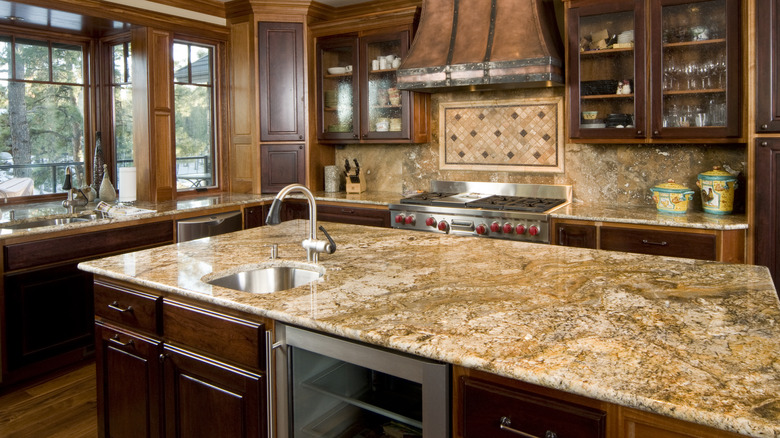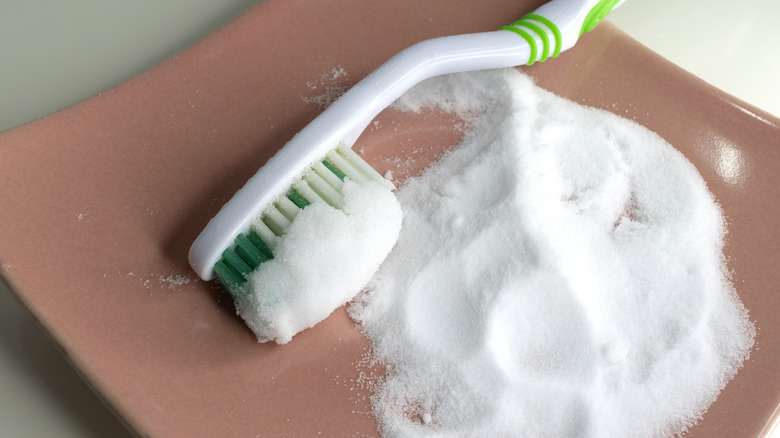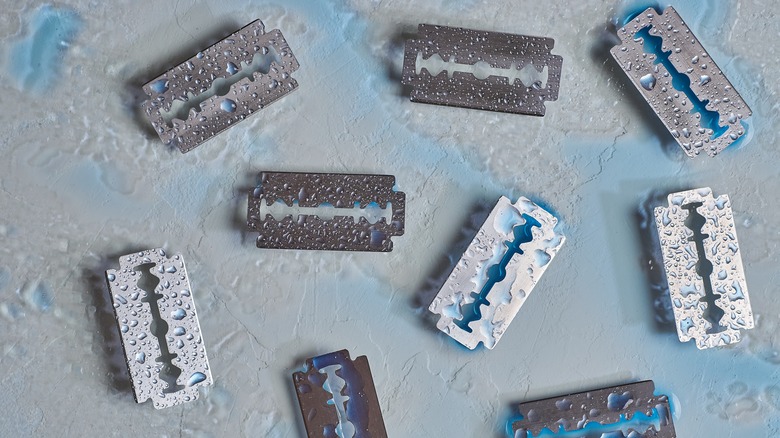Remove Hard Water Stains From Granite Countertops With These Must-Know Tips
One of the advantages of choosing granite countertops is that they're low maintenance. Unlike marble, they're difficult to scratch and stain, making them a great pick for high-traffic areas like kitchens and bathrooms. You don't have to be too cautious with them — spilling water from the faucet onto the counter won't stain it permanently, and pushing a heavy mixing bowl across the island won't scratch it either. However, that doesn't mean the stone is bulletproof. While granite might not incur lasting stains, temporary ones like hard water stains can appear on its surfaces. Luckily, you can remove these imperfections with ease; all you will need is baking soda and a razor blade.
Hard water stains are different from regular water marks since they contain minerals such as magnesium and calcium. These minerals embed themselves on top of the countertop's sealant, creating a white, murky splotch. It can also be a bit scaly or flaky to the touch, making your counters appear dirtier than they actually are. To avoid this, the best thing you can do is take preventative measures. Wipe away water puddles or droplets with a damp, soapy sponge as soon as possible, and dry the area to ensure the deposits don't embed themselves. But if you missed a mess and now have hard water stains to contend with, use these tips to remove them.
Use baking soda as a first line of defense
If you're tired of seeing white, hazy blotches near your faucet, then it's time to take some action. To remove scaly mineral buildup, all you will need is some baking soda and water. First, make a paste out of the two ingredients. Add your baking soda into a small bowl and add a splash or two of water. You want the consistency to be thick rather than watery. This will create a gentle abrasive cleaner to help remove the stain's stubborn scales. Add a dollop of this paste onto a soft bristle brush and rub it in circles onto the stain. Once done, wipe it away with a damp sponge and dry it with a microfiber cloth.
If that removes some of the stain but not all of it, you will need to escalate the baking soda application. Rather than rubbing it in like a cleaner, you may create a plaster to allow it to sink deeper into the sealant to remove the stain. To do so, apply a thick amount of baking soda onto the mark, cover it with plastic wrap, and weigh down the edges so the paste won't dry out. Leave it on the stain for a full 24 hours to soften the scales, then wipe it clean with a damp sponge. This should remove the last of the stain.
Use a razor blade if baking soda doesn't work
If the baking soda isn't strong enough to remove the stubborn mineral deposits, you will likely need to manually remove the last of the residue with a razor blade. This will chip the scales off of the granite's sealant, allowing you to kiss hard water stains goodbye. However, you want to do this slowly and carefully so you don't leave scratch marks on the sealant. To do so, first, make sure the blade is sharp. Using a dull one won't get you very far. Then, put the blade flat against the counter and use it to slowly chip away at the deposits. Only use a small amount of pressure, and when you feel resistance, ease back. Pressing on might take out a chunk of the sealant.
If you're nervous about leaving razor marks, you can also use a Brillo pad. However, make sure not to press down too hard so as not to create scratches. You also want to lift the pad every couple of buffs and inspect the sealant to ensure you're not rubbing into it too hard or leaving marks behind. Once the deposits flake off, wipe them clean with a damp microfiber cloth. Finish the job by buffing it dry.


